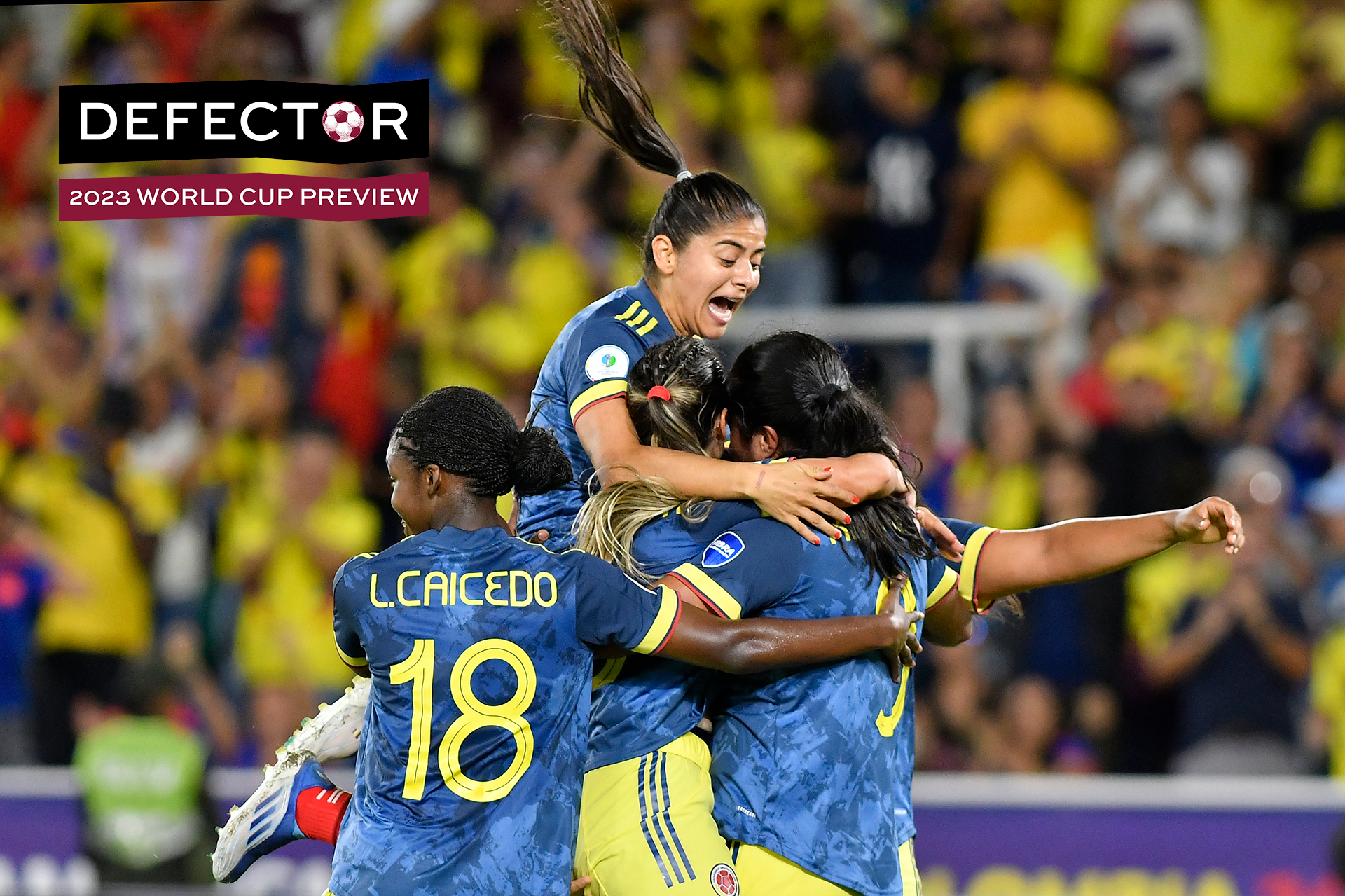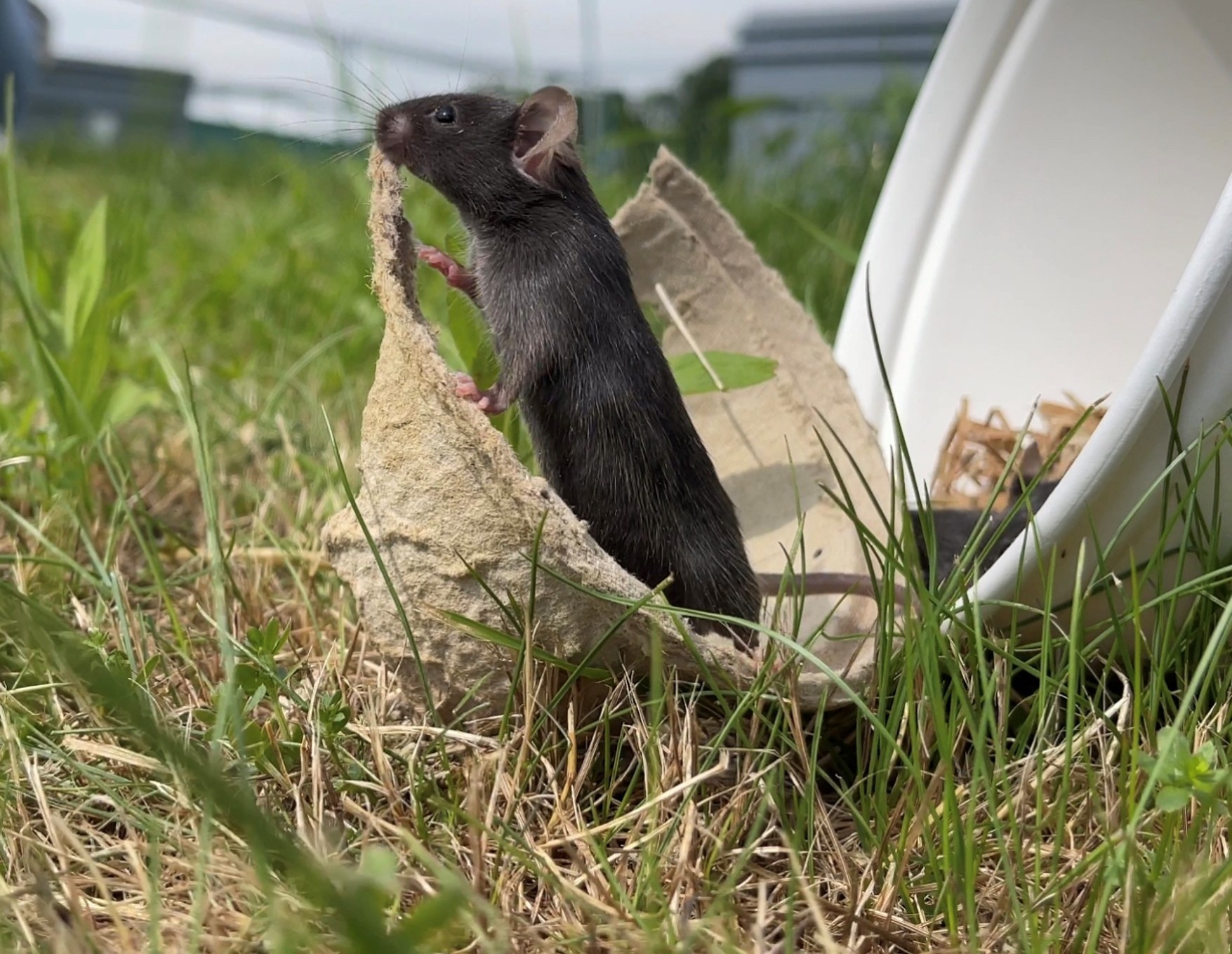It’s almost time for the 2023 World Cup. To help get you ready, we will be providing you with precious information about every team in the tournament. You can read all of our team previews here.
Colombia is in a weird spot heading into the 2023 World Cup. On the one hand, the Cafeteras have only won two games this year, and their most recent friendly, on July 14, was called off 20 minutes in after one of Ireland's players was sent to the hospital with a leg injury in a match Irish coach Vera Pauw said was played "outside the rules of the game." Not great!
On the other hand, the Powerpuff Girls (another team nickname) are on the ascent: Colombia has finished second, to Brazil, in the Copa América Femenina three of the last four tournaments, including last summer as the hosts. In fact, the side's only 2022 loss was to Brazil in the final of that tournament. Otherwise, they cleaned up with nine wins in nine other matches, three of those against World Cup-qualified teams. Colombia might not be at full capacity right now, just days before the World Cup kicks off, but the talent is there.
Plus, Colombia knows how to play in the World Cup. After failing to score a goal in its 2011 debut, while still picking up a point from a 0-0 draw against North Korea, Colombia came out roaring in 2015. A late equalizer against Mexico in the first game of the group only set the stage for the country's biggest women's soccer moment, and one of the biggest upsets in recent World Cup memory, as the Cafeteras took the game to eventual group winners France and beat them by a resounding 2-0 scoreline:
That win was doubly important for Colombia. In the immediate aftermath, it helped them become the best third-place team in the group stage, giving them a pass to the knockout rounds in just the country's second World Cup appearance. There, the Colombians gave the United States a tough first half before eventually capitulating to two second-half goals from the eventual champions. Still, though, the France win and the way the side played England and the U.S. tough in the following two games led to belief that women's soccer had arrived in the already soccer-crazed nation. Big things looked in the cards for Colombia.
And then the country missed the 2019 World Cup. Remember how Colombia had finished second in three of the last four Copas? The one time it did not was the 2018 edition, which unfortunately served as South America's World Cup qualifying process. There, Colombia advanced to the second round, which was a round robin group stage for both the Copa title and up to three potential World Cup spots. Colombia finished fourth, drawing with Chile and losing to both Brazil and Argentina.
Missing out on the World Cup after the successes of 2015 was a disappointment, to be sure, but now Colombia is back and raring to go for this summer's tournament. The team still has some of the players who took part in that 2015 run, but there's a new generation of talent ready to do it all over again. Colombia isn't some tournament favorite, or even the favorite to win its group, but it has an enviable mix of experience, potential, creativity, and firepower. One could see all of those things faltering at the same time en route to a third- or fourth-place finish in a very manageable Group H, but just as easily, Colombia could put together another run that pushes the country's soccer apparatus forward another leap. The Powerpuff Girls have been here before, and now it's time to show what the World Cup missed out on in 2019.
Who Is Their Star?
24-year-old attacker Mayra Ramírez can, and might have to, do it all for Colombia. Luckily for the Cafeteras, Ramírez got a lot of practice doing just that for Levante in the Spanish league this past season. In the process of helping lead her club to a third-place finish in Liga F, and the Champions League spot that entails, Ramírez was a goal-creating machine: 14 goals of her own, plus 11 assists, giving her 25 goal contributions for the campaign, good for fourth in the league.
Ramírez is a complete striker for the modern game. She's got size—at 5-foot-10, she towers over even the tallest of defenders she regularly faces—and quickness with and without the ball at her feet. She combines those two skills to create chances for herself with regularity. Take this go-ahead goal against Real Madrid from October: Ramírez is able to outmuscle the Madrid defender on the way to the loose ball, but then has the wherewithal to let the ball roll by to her back shoulder, before spinning around towards it in space, dribbling past the goalie, and slotting it home through the legs of another defender.
That's not an easy goal at all, with three separate world-class decisions and actions combining to fluidly showcase Ramírez's skills. That's without even considering that she is one of the best ball-carriers in Spain, too: Last season, she notched the second-most progressive carries of anyone domestically, with 192, and 46 of those led to a chance, also good for second in the league.
This combination of size, agility, and decision-making has made Ramírez a star with Levante, and now Colombia will likely play most of its attacks through her talented feet. She's going to play centrally for the South Americans, and while she may play more with her back to goal as a target striker, manager Nelson Abadía still allows her freedom to pick her spots both for runs and for one of those aforementioned carries. Her playmaking may be needed more than her goalscoring in order to power the Colombian machine, but don't be surprised if she racks up an impressive goal count anyway. After all, who's going to stop her from doing anything and everything her country needs from her?
Tell Me About A Cool Youngster
While most of Colombia's roster plays either domestically or in neighboring Brazil, some of the better players on the side ply their trade in Spain. On top of Ramírez, there's also Leicy Santos, Ivonne Chacón, Daniela Caracas, and Marcela Restrepo. There's a lot of experience in that bunch, and most of them are in their primes. There is no one, however, who has impressed more at a young age than Linda Caicedo, and there's probably no one in Colombia's player pool who has higher potential than the 18-year-old Real Madrid winger.
Having moved from Deportivo Cali to Madrid in February after turning 18, Caicedo immediately made herself a key part of Real's plans: In half a season, she played nearly 700 minutes, and notched four assists and two goals in just 10 matches. Perhaps most impressively, she immediately earned a spot in the starting lineup, starting eight of those ten matches. It might go without saying, but 18-year-olds who transfer to a huge club mid-season generally do not rack up those numbers, particularly when said huge club finishes (a very distant) second in the league.
What makes Caicedo such a prodigy at her young age is her movement. She can be found on either side of the field, or even down the middle, for Madrid, and the club trusts her with the ball at her feet as much as it does when she's blazing down one of the wings: Her 5.2 take-ons per 90 minutes was second-highest on the club, and she moves the ball forward at a clip of almost 10 progressive carries in the same timeframe.
For Colombia, Caicedo will have to be just as creative and tricky, as she is the national team's most dynamic player. Luckily for her and for Colombian fans, she is given even more freedom and trust on the ball for the national side than she is for Madrid, and her ability to cut in from the left wing and cause chaos among defensive backlines will help open up more space for Ramírez and Chacón and captain Daniela Montoya. Caicedo might not be the best Colombian player (yet) or its most important (yet!), but she might just be the difference maker between a short stay down under and, perhaps, a stunner or two.
Who Is Their Enemy?
Aside from the freshly made enemies of Ireland, due to that rough pre-tournament friendly, Colombia enters this World Cup without much in the way of external enemies. While Brazil and Argentina are always going to be rivals due to the battle for continental supremacy, there is no bad blood between the sides, at least nothing out of the ordinary. (Though if Brazil were to finish atop Group F, and Colombia finishes second in Group H, that might change, as the two South American sides would face each other in the round of 16.) Elsewhere, Colombia has had some clashes with the United States, and there's always France to serve as a marker of how far Colombia has come.
Really, though, Colombia's biggest enemy is itself, or more accurately, the country's soccer system. Over the last decade, players and members of the training staff have brought to light instances of sexual harassment and wage theft, and one by one, they have all been shot down by the country's soccer federation. There are accusations of retribution for players who spoke up, as well: Daniela Montoya first went public with the claim that the national team had not been paid for the successful 2015 World Cup in September of that year. She was then left off the 2016 Olympics roster in what players felt was a clear punishment for speaking out.
The claims of sexual harassment and abuse are even more jarring, as trainer Carolina Rozo accused under-17 manager Didier Luna of trying to kiss and fondle underage players. Rozo says that the girls kept silent for years in order to avoid risking their place in the team, and that they eventually were shunned from the national team system after speaking out. Luna was eventually removed from his post and was sentenced to 28 months in prison, though he has yet to serve that sentence. And though both FIFA and the Colombian federation have pledged to stamp out the discrimination and abuse in the country's soccer system, those wounds are still fresh as Colombia prepares to enter the World Cup for the first time in eight years.
National Folk Hero Who I Think Is Cool
One of the most prominent historical aspects of South America comes from each country's fight for independence. With this in mind, it's not a surprise that Antonio Nariño is almost as highly regarded as Simón Bolívar in Colombia. Nariño was an ideological leader of the fight for independence from the Spanish, and he is celebrated in Colombia for his staunch commitment to a centralized, independent nation.
Fueled with inspiration by the French Revolution, Nariño was imprisoned multiple times for sedition and rebellion, but he was never fully taken out of the fight for Colombia's independence. In fact, though he was not a military general like Bolívar, and therefore not a crucial part of the actual war for independence against Spain, Nariño still served as vice president to Bolívar for a couple of months in 1821. In the present day, Colombia celebrates Nariño as one of the fathers of its independence: the presidential palace in Bogota is named after him, and he is even name-dropped in the Colombian national anthem.
Scran Or Not Scran: National Dish Edition
The national dish of Colombia is the bandeja paisa, which really leans into the "dish" part of the equation:
While different regions of the country have their own variations on the bandeja, the traditional bandeja paisa has some combination of beans, rice, beef, chorizo, avocado, morcilla, chicharron, plantains, an egg, and an arepa. That's a lot of food, thrown together all on one plate. My verdict for the bandeja paisa is, of course, Scran.
What Would A Successful World Cup Look Like For This Team?
Even though Colombia is ranked lower than South Korea in FIFA's imperfect rankings (25 vs. 17), the difference in talent between the two sides isn't very large. Anything less than finishing second in the group should be considered a disappointment for Colombia, even if it drew the slightly more difficult schedule of playing Germany second instead of third, when the Germans might already be qualified to the knockout round. There's too much talent on Colombia's roster to accept going home after just three games, and beating South Korea in the opening match would go a long way towards avoiding that fate.
After that, it's all house money for Colombia. That expression usually implies that a team would be happy even with a loss, and maybe that's true. But it's almost too perfect that the most likely opponent for Colombia in the round of 16 knockout would be none other than France. Could the Cafeteras scare the French once more? Hell, could they beat a France team that isn't at its best heading into this tournament? Hoping for a quarterfinals run from Colombia might be wishful thinking, and it's certainly more likely that the side goes home early than it making a big run into the rarefied air of the fifth match. But, with this collection of players, it's not impossible to see a world where Colombia finally claims its spot on the world stage. All it would have to do is recreate the country's best moment to date, eight years later.






